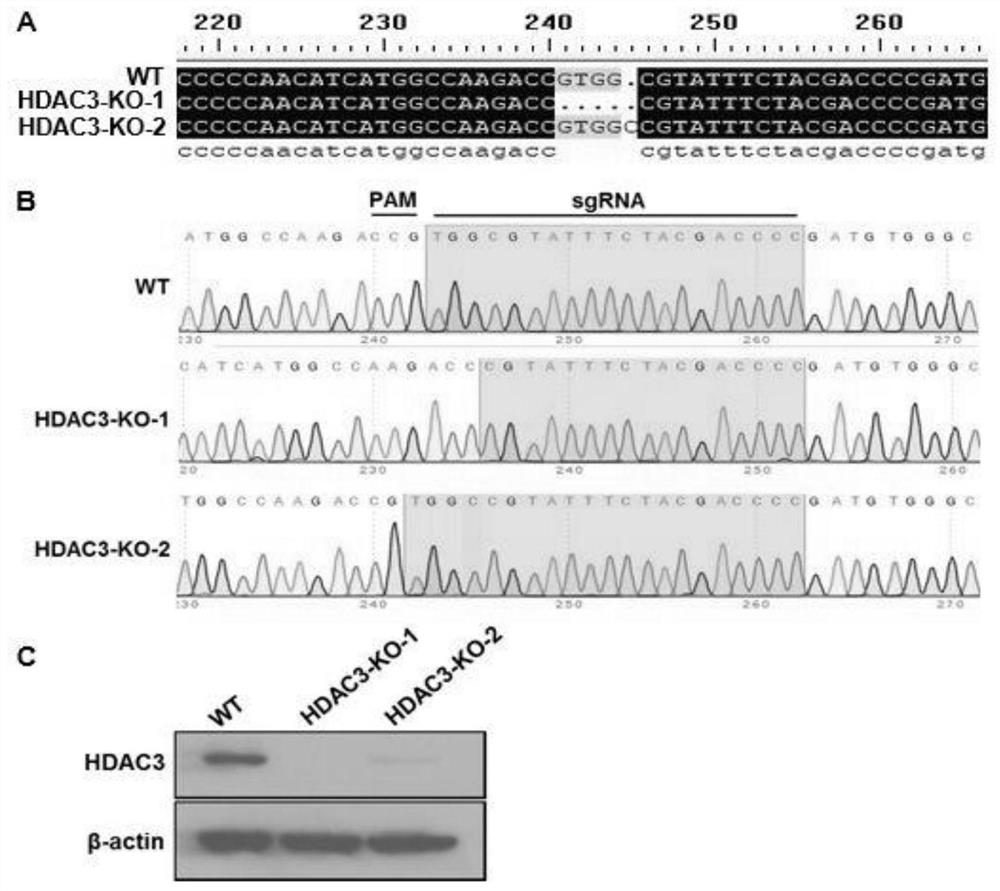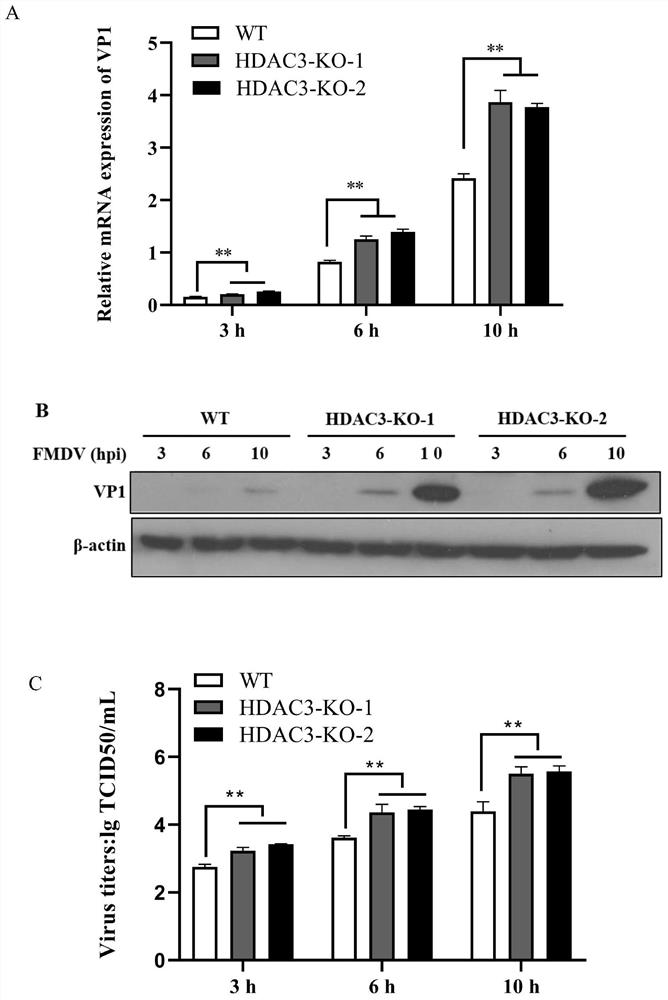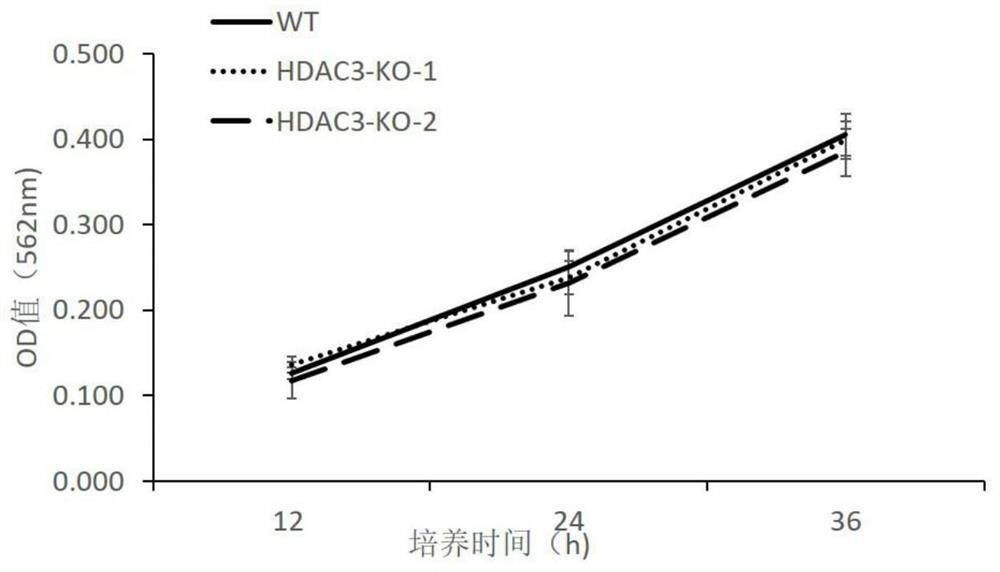HDAC3 gene knockout BHK-21 cell line as well as construction method and application thereof
A BHK-21, gene knockout technology, applied in the field of genetic engineering, can solve problems such as unclear effects, and achieve the effect of accelerating the replication rate and increasing the virus titer
- Summary
- Abstract
- Description
- Claims
- Application Information
AI Technical Summary
Problems solved by technology
Method used
Image
Examples
Embodiment 1
[0035] According to the HDAC3 gene sequence of golden hamster (Mesocricetus auratus) in NCBI, CRISPOR software (http: / / crispor.tefor.net / ) was used to design the gRNA sequence in the first exon region of HDAC3: GGGGTCGTAGAAATACGCCA. The designed gRNA was synthesized, annealed and ligated to the PX459 (Addgene #62988) plasmid according to the method published by Zhang Feng's laboratory (Nature Protocols, 2013). The correctly sequenced CRISPR plasmids were extracted for use. According to the standard transfection procedure of Invitrogen Lipofectamine 2000, the BHK-21 cell line was transfected with the CRISPR plasmid. After 48 hours of transfection, puromycin with a final concentration of 3 μg / mL was added to screen for 5-7 days. One week later, a single cell clone was formed, and a single clone was picked with a cloning ring, transferred to a 24-well plate, and expanded for culture. Different cell clones were collected for identification at DNA level and protein level. The fol...
PUM
 Login to View More
Login to View More Abstract
Description
Claims
Application Information
 Login to View More
Login to View More - R&D
- Intellectual Property
- Life Sciences
- Materials
- Tech Scout
- Unparalleled Data Quality
- Higher Quality Content
- 60% Fewer Hallucinations
Browse by: Latest US Patents, China's latest patents, Technical Efficacy Thesaurus, Application Domain, Technology Topic, Popular Technical Reports.
© 2025 PatSnap. All rights reserved.Legal|Privacy policy|Modern Slavery Act Transparency Statement|Sitemap|About US| Contact US: help@patsnap.com



